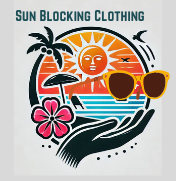How To Tan Safely continues to be important for many. We are not yet ready to completely give up our “Healthy Glow.”

With the awareness of all the dangers of too much sun floating in our minds, we still just won’t give up that we need a “little” tan. Just a “touch” mind you. There should be a way to get that! What would that hurt?
Well, yes there is, a way to tan a little, for those who are patient.
- Limit tanning sessions to 15 minutes a day.
- Only tan before 10 AM and after 4 PM
- Always use a full spectrum suncreen with a SPF of 30 or more.
- Apply at least 20 minutes before suntan session
- No tanning beds
Protecting Your Skin With Short Tanning Sessions
- Always wear sunscreen. The Center for Disease Control tells us that less than 15% of men and 30% of women who plan a day in the sun will take the time to apply sunscreen! Even though sunscreen has been proven essential for protecting your skin from UV damage. Are you not willing to help yourself?
- Time your tanning session and be prepared to cover up with sun blocking clothing (sun hat, sunglasses and sun blocking shirt) or take a break in the shade.
- Another option is one of the products that you spray or rub on that will stain your skin for a short while. The proffesional spray on tans look really good,and can give you color for a vacation or special weekend. Just remember, you will still sunburn very quickly in the sun. Wear sun blocking clothing and apply sunscreen to unprotected areas.
- There are supplements you can take. The results are a bit iffy for most who try them. You would be better off investing in supplements to help your skin be healthier. Vitiman C, D are a couple of ones recommended to help your skin heal from sun damage.
Importance of A Short Time In The Sun
Most of us spend too much time in the sun when we are trying to achieve a perfect tan. The number of repeated exposures as well as the length of time you are in the sun is what determines the dangers to your skin.
Yes, vitamin D is important and necessary for a healthy body. However, only 15 minutes will get your body manufacturing that vitamin D. Three 15 minute sessions will be all you need a week.
Remember to choose safe hours, before 10 AM and after 4 PM.
Most dermatologists agree that the safest thing is to not tan at all.
However, if you don’t want to completely skip the sun, let’s look at what happens when your skin tans.
Turning Tan Is How Your Body Protects Itself From The Sun
Do you lounge outside and allow the sun’s UV rays to reach the outer layers of your skin to achieve your tan? Or are you involved in other activities or sports when getting your tan?
Your skin protects itself by producing skin cells that are called melanocytes. This is where your skin gets busy producing melanin. Melanin is a pigment that helps protect against damage to your skin.
Melanin also helps absorb the UV radiation from the sun. This is what causes your skin to darken and tan. This keeps tanning in the outer layers of your skin.
“Tanning is a byproduct of DNA damage. Whenever you have a tan, it means you’ve hurt your body,” says Gabriel Neal, MD. Dr. Neal is a family physician and clinical associate professor of Primary Care Medicine & Population Health at the Texas A&M College of Medicine.
Your damaged skin cells can repair themselves. When you stay out of the sun your tan will fade. That’s a sign that your surface skin has healed.
Is There Really A Safe Tan For You?
If you are exposed to the sun for a long period of time, your melanocytes may continue to produce melanin, even after you are no longer in the sun.
Often your body will fill danger in the condition of your skin. This is why your skin may continue to develop a tan a day or so following a bad sunburn.
Regardless of our skin color, most of us have close to the same amount of melanocytes in our bodies. It is the amount of melanin those melanocytes produce that causes the different tones of skin we see.
My melanocytes produce very little melanin, as you can tell by my fair skin. This is just a part of my family genetics like how tall I am or my hair color.
That’s why people with darker tones in their skin are less likely to get a sunburn because they have higher baseline levels of melanin.
However, people of all skin colors can still develop skin cancer. They can be in trouble quickly when ignoring the need for protecting their skin.
What Are The Short-Term And Long-Term Effects Of Tanning?
“One of the biggest misconceptions about tanning is that getting a base layer tan will help prevent skin damage for future tanning.” Naiara Barbosa, MD, is director of Mohs Surgery and Dermatologic Oncology and assistant professor at the University of New Mexico.
“In reality, this couldn’t be farther from the truth.” Barbosa states.
The effects of skin damage from tanning are cumulative and increase each time you expose your skin to UV radiation. Barbosa also says that tanning and sunburn are both significantly harmful to your skin.
Besides sunburn, short-term physical effects of sun exposure include melasma and freckles. “Freckles are one of the earliest indicators of sun damage,” Barbosa says. Sun exposure can also trigger symptoms of existing conditions such as rosacea.
If you tan frequently you may damage your skin beyond the point of repair. If you continue tanning you are putting yourself at a higher risk for skin cancer.
Skin cancer is the most common form of cancer in the United States, with one in five Americans developing it before the age of 70.
Something else to remember about those UV rays is that they break down collagen, the protein that provides structure to your skin. When it is broken down, your skin will sag and wrinkle.
That’s why too much sun exposure causes early aging, leading to wrinkles, thin skin, easy bruising, and sunspots. Yes, all those things can happen to you! This why wearing sun blocking clothing is such a no-brainer for keeping your skin safe.
A Concern For Those Who Chose To Tan
A common misconception is that a tan indicates good health. Three 15 minute sessions will reduce the pale color we refer to as “sickly pallor.” After that, you are simply running the risk of all the dangers the sun can bring to your skin.
Get over yourself and thinking you “have” to have a tan. The DNA damage is not repairable. Even if you watch the clock, the chances of getting too relaxed or too comfortable are too great.
If your children are also out, remember to closely monitor their time in the hotter sun ray time. Get them into the shade before the sun starts its damage. They have a long time to stay safe. Help them as much as you can to protect their skin from the sun.
A word of caution if your skin has really dark tones. You do have the ability to reflect more sun due to the melanin in your skin. However, your skin probably won’t start making vitamin C quick enough to keep you from burning.
Keep a close watch on your skin, as you may burn before you are aware of it. Watch your diet for the Vitamins you need.
Who Should Not Tan? Does This Include You?
Certain risk factors cause some of us to be more susceptible to have our skin reaching the level of dangerous damage from the sun. Knowing more about how to tan safely can help. Some of the factors for risk include:
- Your Age: Younger skin is more sensitive to sun damage, and exposure to the sun. Childhood or adolescence over exposures makes skin cancer more likely in later life.
- Skin tones make a difference: Those with lighter skin are more prone to sun burning. If you already has a natural tan, this may offer a small amount of sunburn protection. Allow you a few more mintes in the sun before burning.
- Your history of skin cancer: If you have had skin cancer before, more sun exposure could increase the risk of future cancers for you. Think about the risks. It may not be worth it to you.
Then there are some people who should avoid sun exposure entirely. Reasons include those who have recently:
- Have you undergone a cosmetic treatment, such as a skin peel or laser hair removal?
- What about a skincare product containing chemical exfoliants, like salicylic acid?
- Do you take certain acne medications, such as isotretinoin, or used topical retinoids?
- Have you taken other medicines that can cause photosensitivity, such as tetracycline antibiotics
Your doctor or dermatologist can advise you when it is safe to spend time in the sun after any treatments.
If you are taking medication, be sure and check the label before you consider tanning.

Sami’s Take On How To Tan Safely
We are a strange breed. We know that tanning is bad for us, but we find it hard to stay out of the sun.
Of course, repeated warnings can get to be ineffective. What is an attention-getter? That trip to visit your dermatologist. That can do it.
Start working your safety into your lifestyle. Yes, it is hard to make those changes in our mindsets as well as in our day.
Now you are more aware. This awareness can help move you from a venerable one to one who is in control of the sun safety for their skin. Make your list. Figure out how you can do a better job of skin protection.
Don’t be the one in five Americans who will develop skin cancer. Wear your sunhat, your sunglasses. Add a sunblock shirt. With less skin to get sun, you can more easily protect your exposed skin with sunscreen. Get a healthy relationship with the sun. Enjoy in small doses.
Is how to tan safely in your future?
